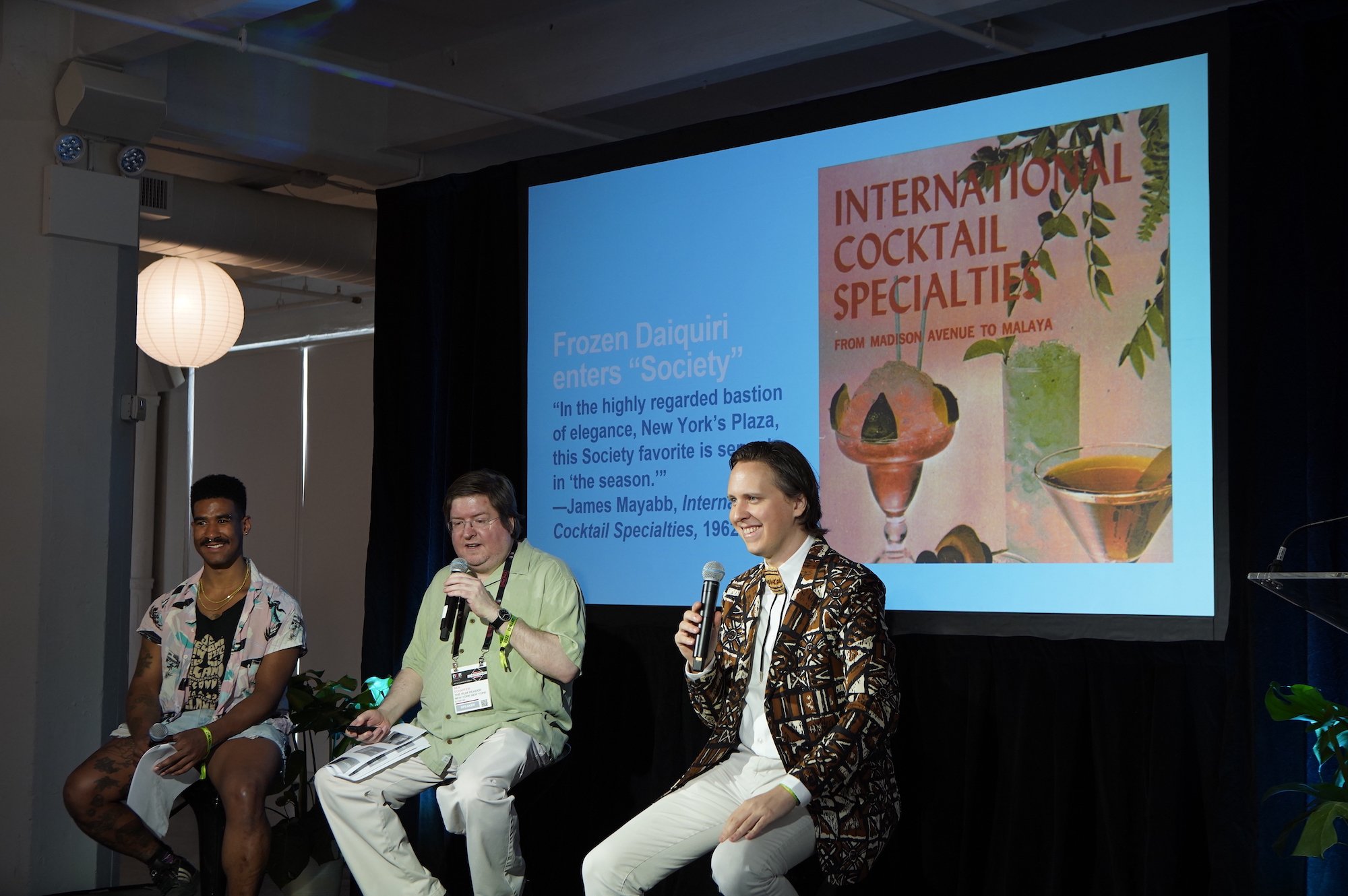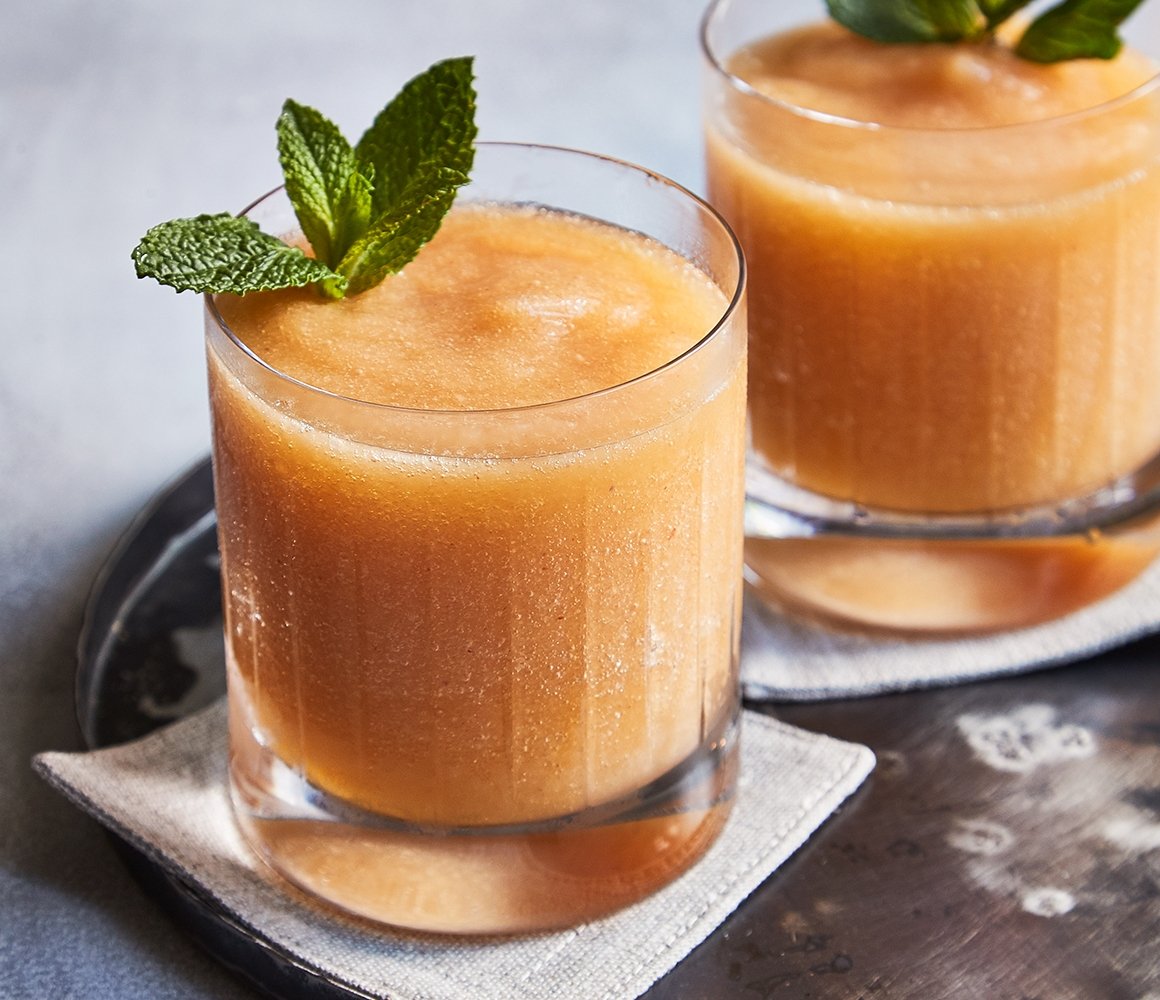Bar Convent Brooklyn Panelists Share Why Frozen Drinks Deserve Your Respect
“Frozen drinks started out as craft,” says Ben Schaffer, Editor and Publisher of the Rum Reader, adding, “They are a culinary format.” And while frozen drinks in modern cocktail culture tend to be thought of as cloying, day-glow concoctions served primarily at spring break resorts, Schaffer, along with bartenders Garret Richard of Sunken Harbor Club, and Jelani Jah Johnson of Great Jones Distilling Company (maker of Four Grain Bourbon a 2022 NY International Double Gold Winner) want to place frozen drinks back in the framework where they belong: as craft cocktail expressions that are as valid as their shaken and stirred counterparts.
During Bar Convent Brooklyn 2022, on an appropriately hot day, the panelists outlined various techniques for offering quality frozen selections on a cocktail menu, as well as the importance of doing so, in an educational session entitled “The Craft Approach to Frozen Drinks.”
History of Frozen Drinks
Frozen cocktails, especially fruit daiquiris, have been a part of cocktail culture since Prohibition. While this would seem counterintuitive, this is precisely when Americans started traveling more to the Caribbean, and especially Cuba, where it is believed frozen daiquiris got their start, and their popularity traveled back to the U.S. post-prohibition. “(These drinks) are air conditioning in a glass,” says Johnson. “They were a way to escape the heat and have this culinary experience.”
“Frozen drinks definitely went through the dark ages in the 80s and 90s because of the commercialization of the process,” he adds, both in terms of equipment and for the pre-made products designed to shortcut the cocktail-making operation. “They became commercialized and, frankly, shitty,” but Schaffer also notes that this was happening with many drinks during this era, not only frozen ones.
The resurgent interest in frozen drinks are a logical part of ongoing craft cocktail culture, in that not only are they refreshing and delicious, but highly Instagrammable.
Techniques for Frozen Drinks
Frozen drinks require different techniques, not only depending upon what kind of equipment you have, but also that are different than that which would be applied to shaken or stirred cocktails, as frozen cocktails have the potential to carry more water content. “The idea is, how can you get flavors to pop with very high dilution and served at very low temperatures,” says Richard.
Three different approaches for frozen cocktails were outlined during the session, with cocktail recipes offered for each, illustrating different considerations for different types of equipment, where equipment may come down to matters of space, budget, and atmosphere for different bars.
Flash Blending
Flash blending, as is possible given something such as a milkshake machine, or “high powered swizzle stick” behind the bar, is a method that provides aeration, and takes only a small amount of crushed ice to achieve a frozen cocktail. “It’s the opposite kind of thinking of crushed ice drinks,” says Richard. “There’s more dilution up front, and then a lot less at the back.”
Power Blending
The second method outlined utilizes an actual blender or Vitamix. “What I love about the blender is that everything becomes a homogenous mix, which gives it a better texture. It feels like a smoothie,” says Johnson, which is preferred when incorporating non-homogenous ingredients such as whole fruits into a frozen drink. Furthermore, it allows for more easy experimentation, since components don’t have to be liquified up front. “With a Nutribullet, you can throw anything in there, and can adjust if needed by testing and throwing more stuff in there,” says Johnson. “The magic of blended is you can measure in splashes,” adds Richard. Atmosphere, however, is an important consideration when using something as noisy as a blender. Some bars have a noise level that can accommodate it, but you don’t want to ruin the guest experience for it.
Emulsifiers
Discussions of emulsification in frozen drinks naturally turned to the topic of emulsifiers, such as xanthan gum. “Who is the most consistent frozen drink maker on the planet?” posed Richard. “Starbucks.” (About which Reddit revealed that all of their sweeteners contain xanthan gum for this purpose.) “It’s very slimy on your hands,” says Richard, which is something to consider in the grand scheme of cocktail bar output, but that in some cases is still worth it.
Slushy Machines
According to the three presenters, the words “slushy machine” should not be considered antithetical to the creation of craft, frozen cocktails. “It’s convenient, consistent, quiet, and high volume,” says Johnson. “You don’t have to actually make (the cocktails;) you just pull the handle.” They require a bit of prep time up front in terms of R&D, and large-batching cocktails, plus they take up space, but are a great option for bars that want to lean heavily into a frozen program, and slushy machines need not be relegated only to the output of syrupy cocktail mixes.
The Case for Frozen Drinks
Maverick Bourbon Slush photo courtesy of Maverick Whiskey
“Frozen drinks do some things that shaken and stirred drinks can't,” offers Johnson. “These are methods that have to be in your toolbox,” not in the least because allowing various machines to take the wheel during services can help busy bartenders manage higher volumes without repetitive strain. “A lot of discussion in the industry is about how do we create the next generation of bartenders that are not destroying themselves physically, and frozen, blended cocktails are a part of that,” says Richard. “One of Tiki Ti’s bartenders is 70 years old. That wouldn’t be possible if he had to shake everything on Kold Draft ice. This is a short-cut, but it’s also a better solution.”
For more on frozen drink culture and technique, stay tuned for Ben Schaffer and Garret Richard’s upcoming book, Tropical Standard: Cocktail Techniques and Reinvented Recipes, coming in 2023.



